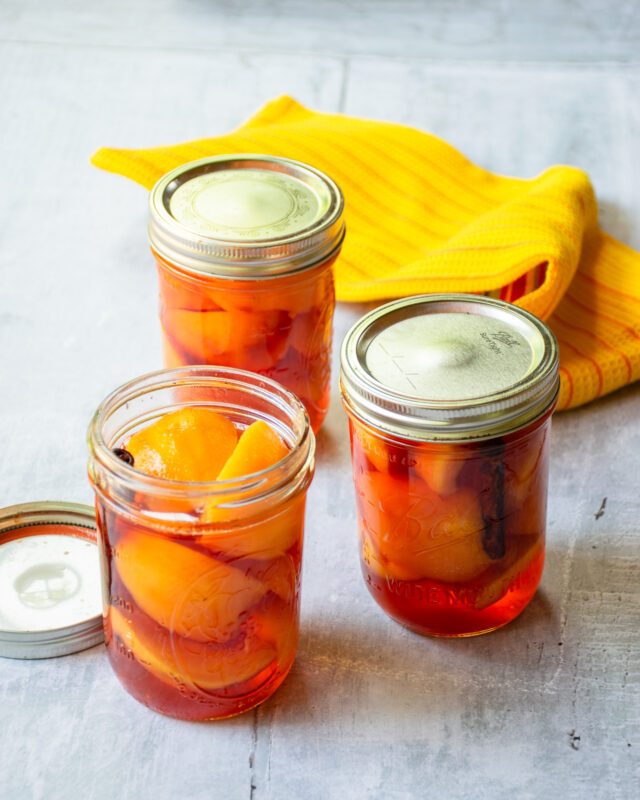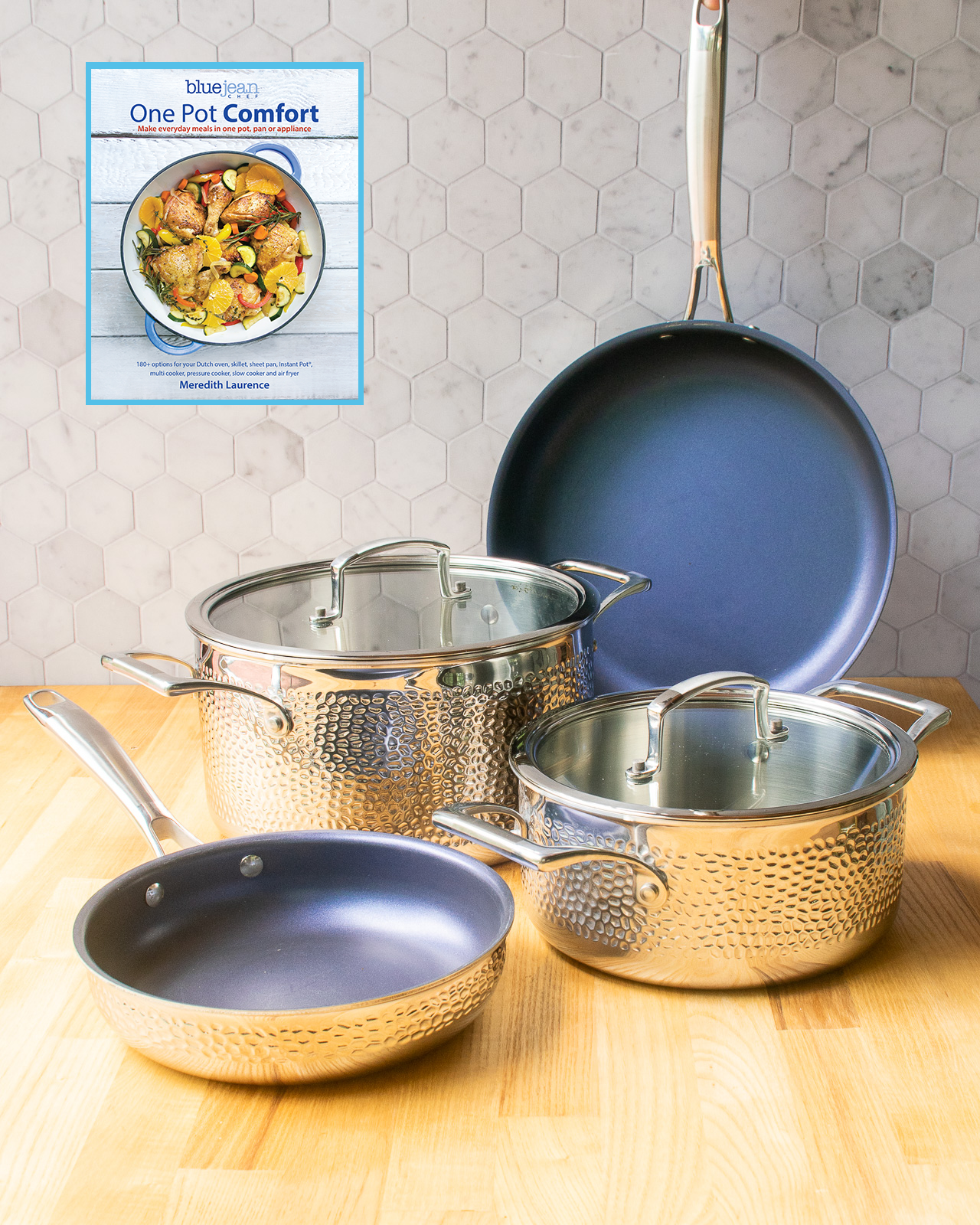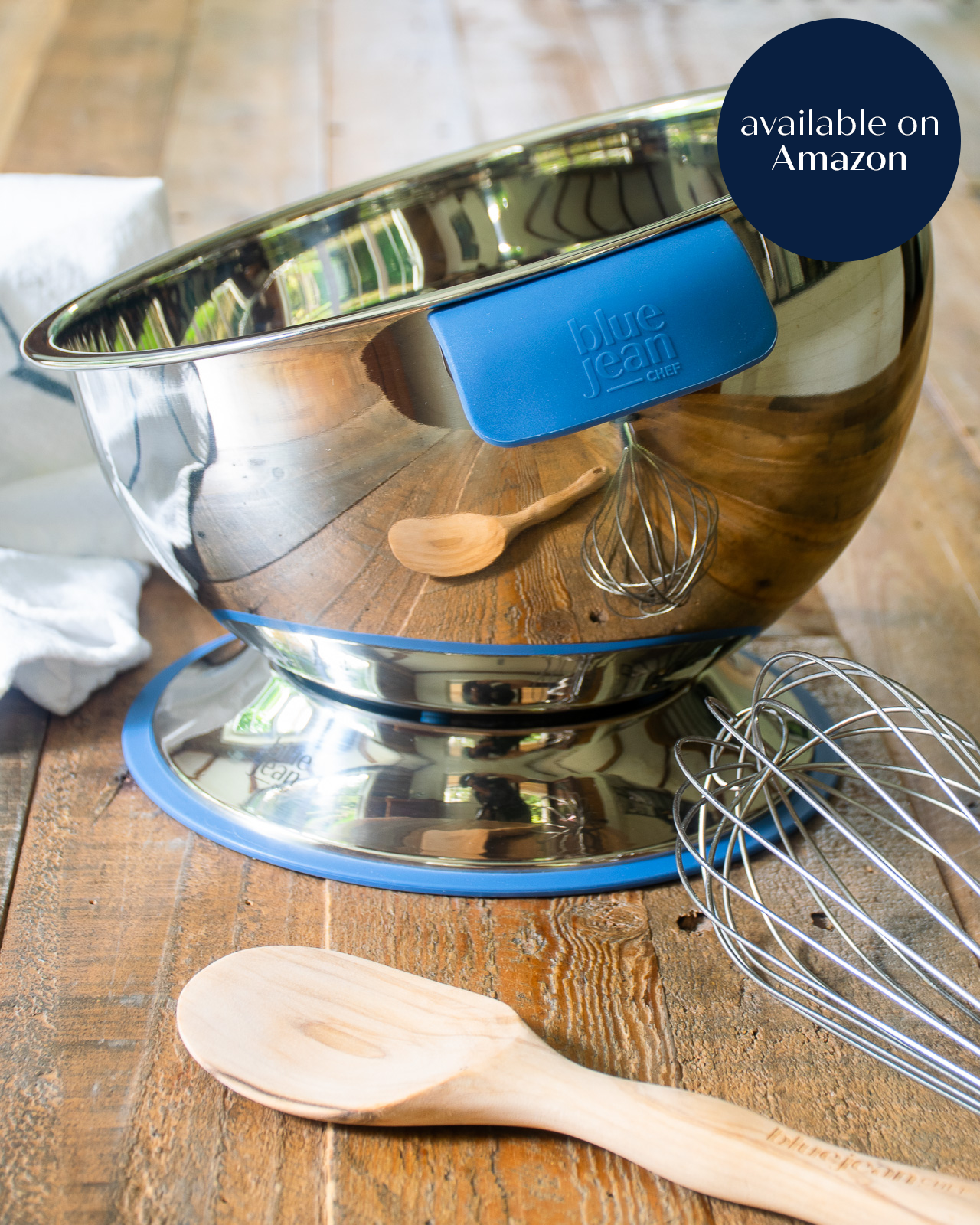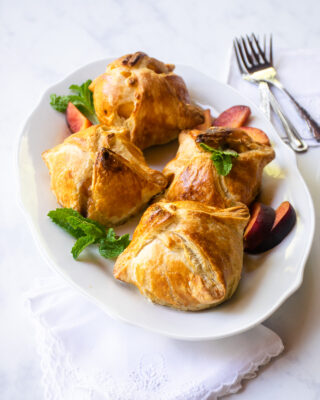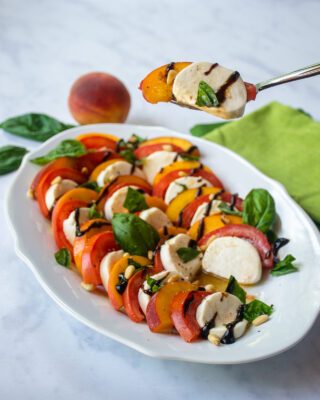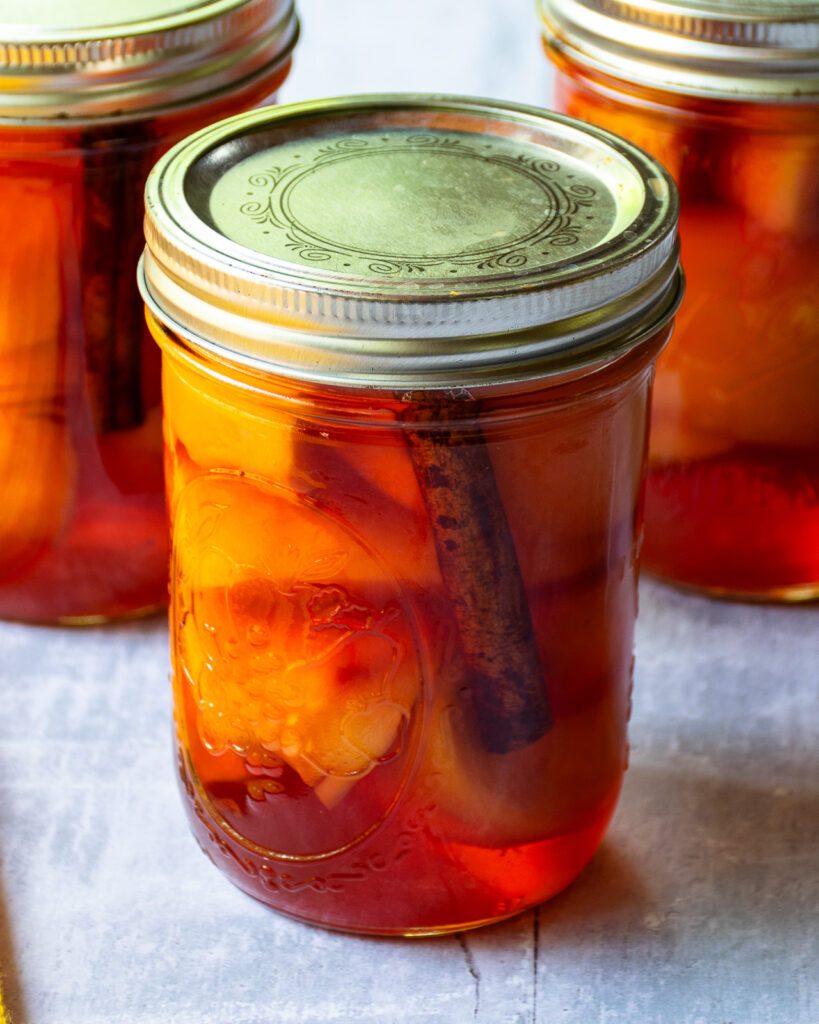
Why Pickled Peaches?
In our world of convenience, we can go to the grocery store and buy so many fruits and vegetables at any time of the year, regardless of whether they are in season or not. But peaches? Peaches are not one of those fruit. They are in season in the summertime and you’ll only be disappointed if you try to buy a peach at any other time of the year – if you can find one, that is. So, why pickle peaches? Exactly for the very reason that they are not available and delicious all year long. By pickling peaches in a sweet-tart solution, you can enjoy the perfect peach months after it is in season.
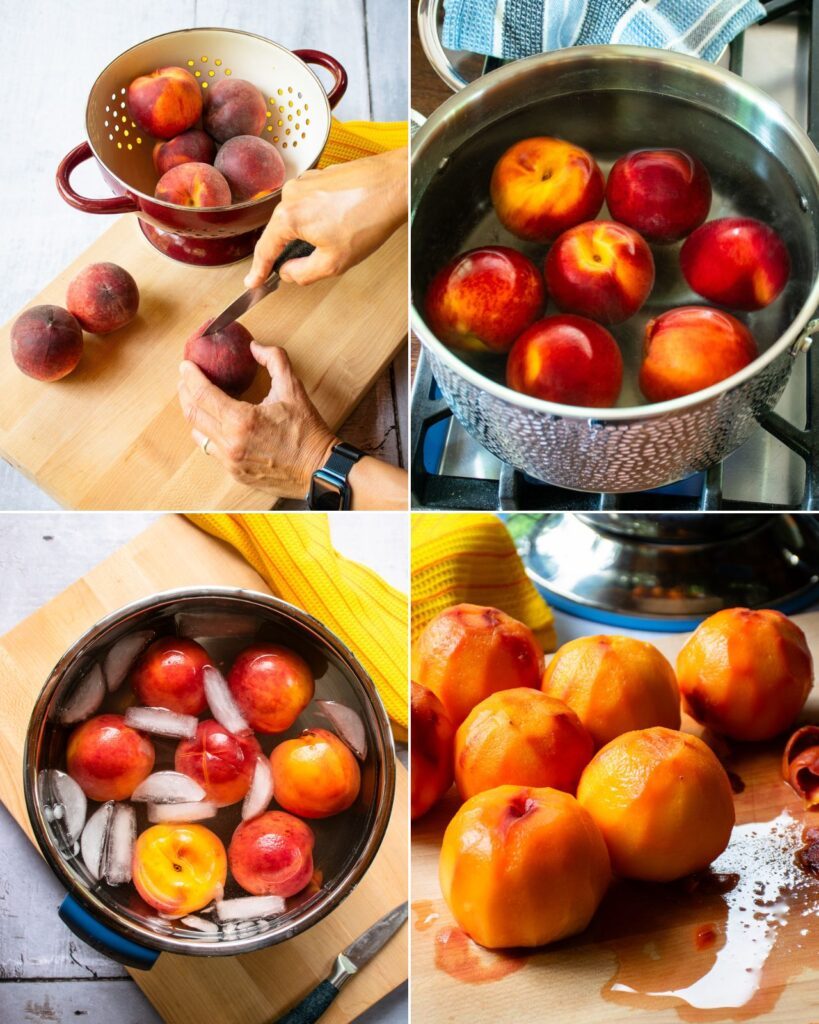
How to Peel Peaches
The first step in pickling peaches is to peel them. To do this, score the bottom of the peach (the end opposite the stem end) with an “X”, just through the skin. Then, blanch the peaches in boiling water for 30 to 90 seconds before plunging them into an ice bath. The peel should start to release pretty easily. In order to peel them easily, however, you really need to be working with ripe peaches. Even easier to work with are freestone peaches, which separate from the pit easily. (to learn more about freestone vs. clingstone vs. semi-freestone peaches, click here) If your peaches are a little underripe, or if they are clingstone peaches, not to worry. You can use a peeler to help get the skins off and to be honest, the look of the peach won’t matter so much with pickled peaches. Just do your best to remove the skin.
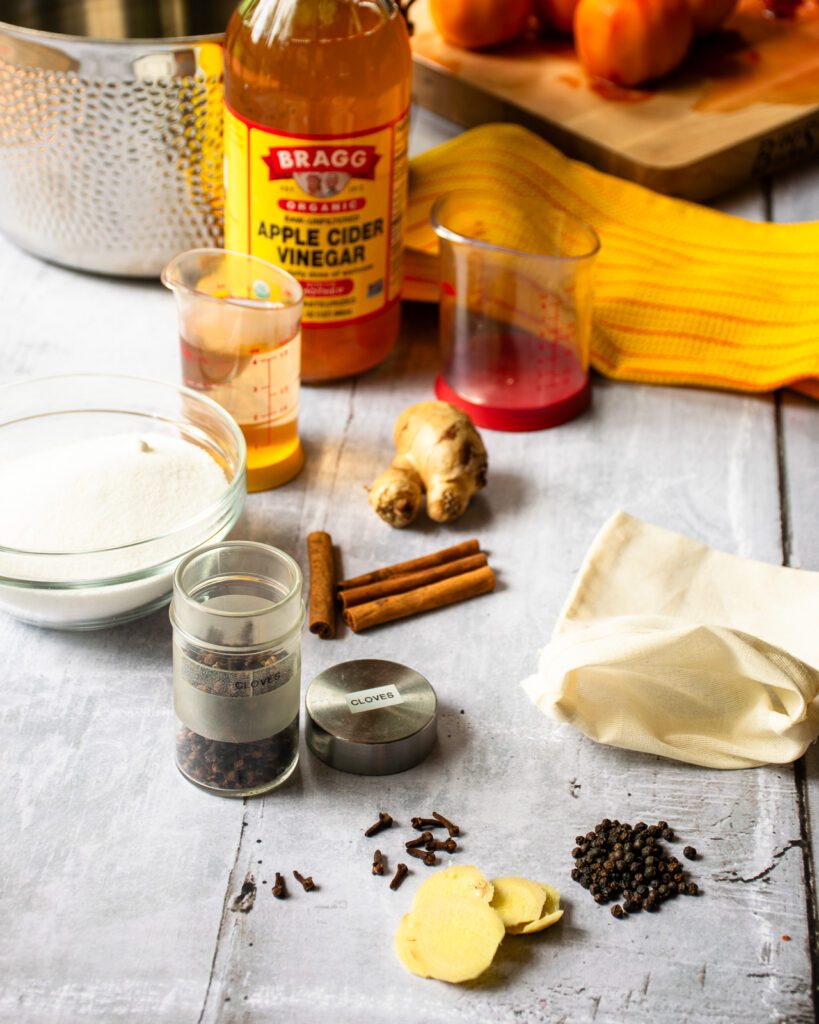
Ingredients for Pickled Peaches
I use a 1:1 ratio of sugar to vinegar and water in my pickled peaches recipe, and I choose to use apple cider vinegar, but white vinegar or champagne vinegar would work just as well. To add a little flavor to my brine, I add cloves, peppercorns for a gentle warmth, sliced ginger and cinnamon sticks, both of which pair perfectly with peaches. Putting all these little spices into a spice bag helps make them easy to remove from the brine at the end, but you can just toss them into the brine and strain it later if you don’t have the little spice bags.
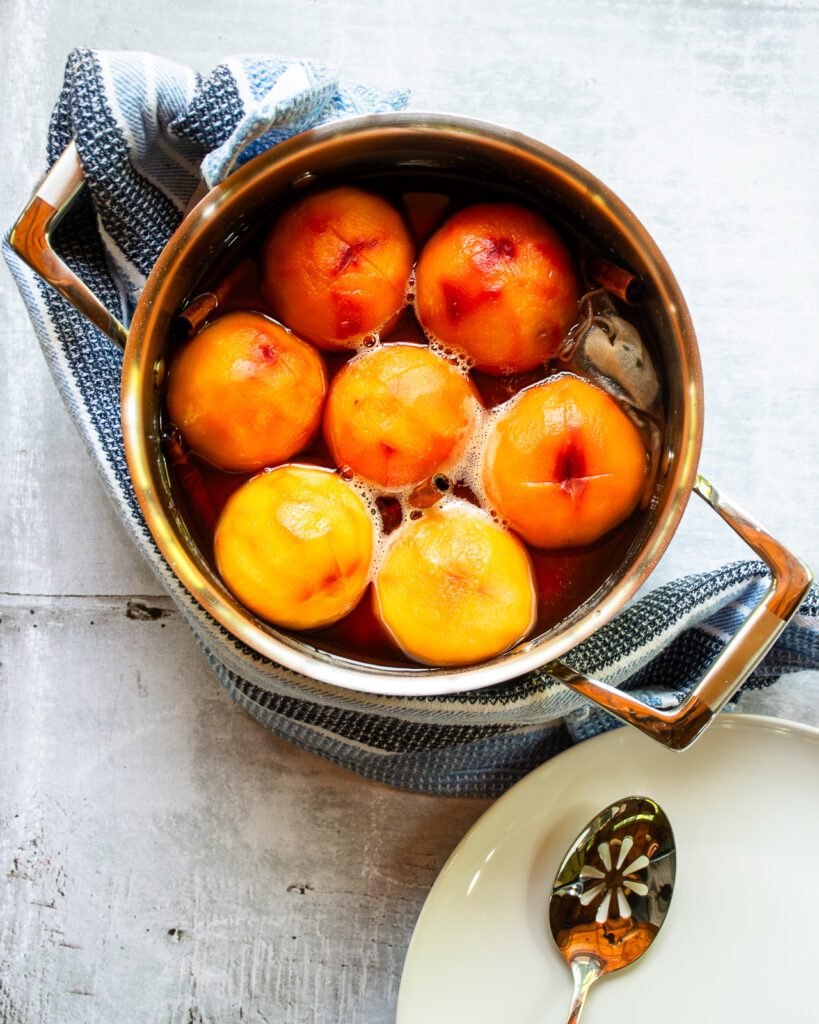
Poaching Peaches in Flavored Syrup
Once you have simmered your brine for a few minutes, pop the peeled peaches into the brine and simmer gently for 5 minutes or so. Then, remove the peaches and cut into halves or quarters and put them in sterilized glass jars. Wide mouth jars are the easiest to work with. You can run the jars and lids through the sanitize cycle of your dishwasher, or boil them in a pot of water for 10 minutes to make sure they are sterilized and ready to work with. 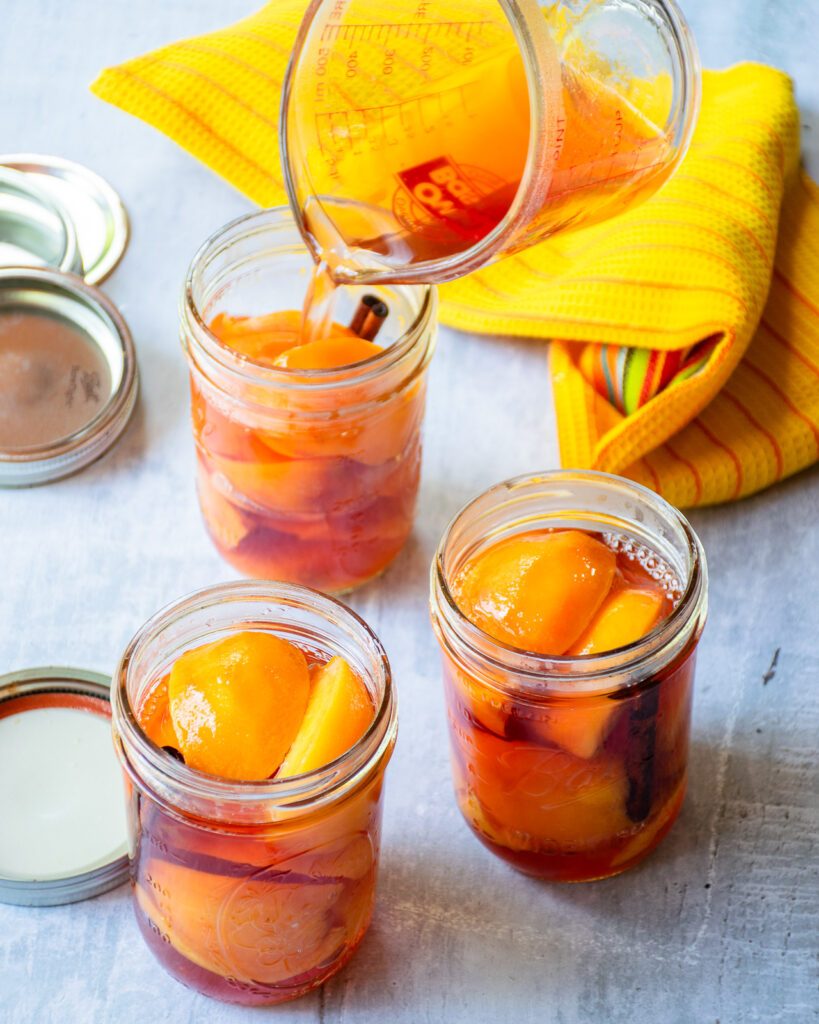
Refrigerator Pickled Peaches
Bring the brine back to a simmer and then pour the hot brine into the jars, filling to ½-inch below the rim of the jar. Pop a cinnamon stick into each jar and seal. This recipe uses about 7 peaches and makes 3 pint jars of pickled peaches. With that small amount, I doubt you would need to properly can the pickles (you’ll go through them fast enough!) These are refrigerator pickles that will last up to 3 months. If you want to can the peaches for longer storage, use a water-bath canning method and consult with canning time charts like the one here.
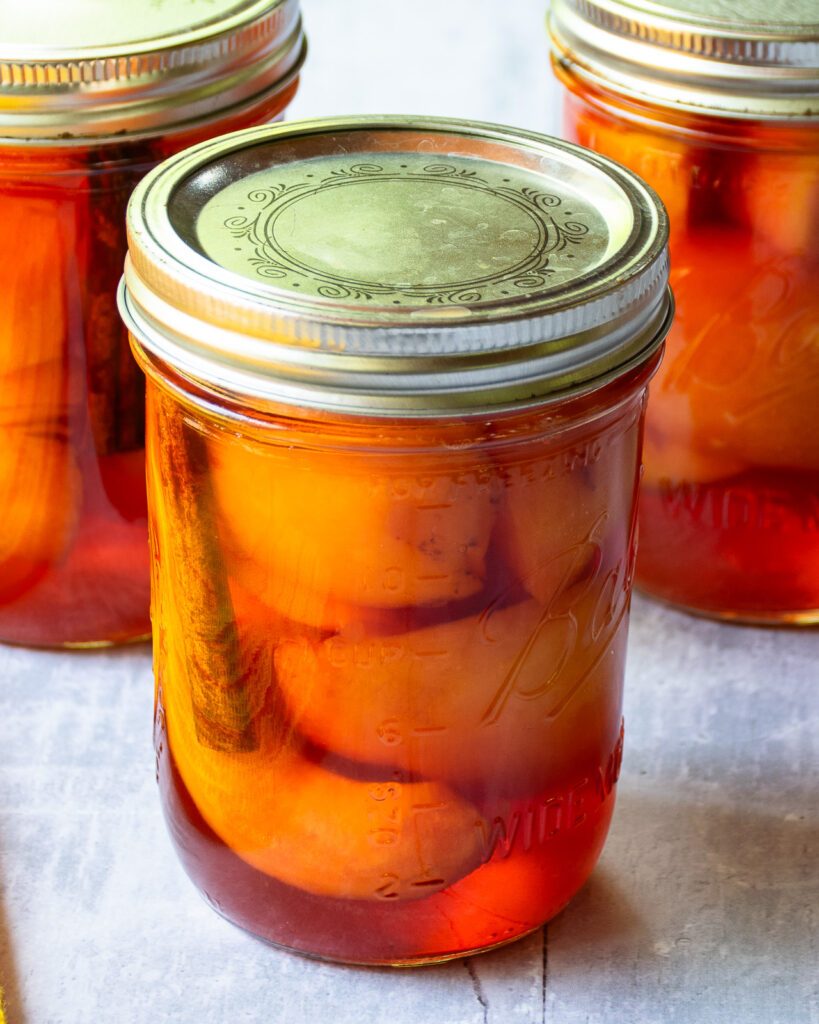
What to Serve with Pickled Peaches
I think once you taste these pickled peaches, which are sweet-tart in flavor, you’ll have plenty of ideas of how to serve them, but some of my favorite ways are:
- as a condiment on a cheese board
- with grilled chicken or pork
- on a crostini with goat cheese
- in a salad
- on ice cream
However you serve them, you’ll be happy that you saved that little bit of summer in a jar.
